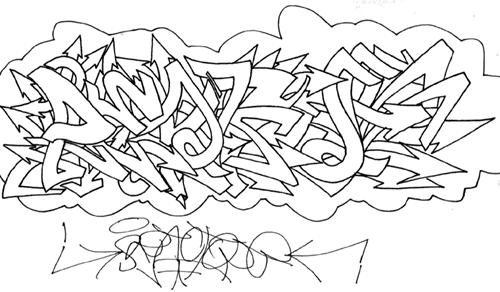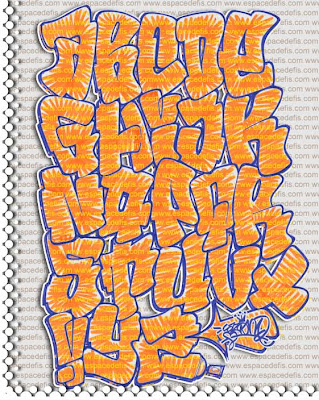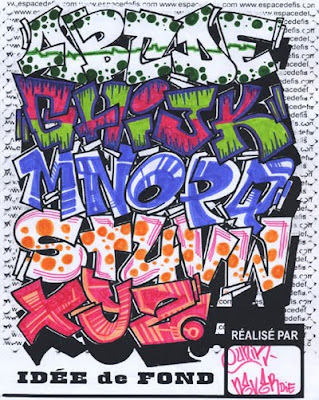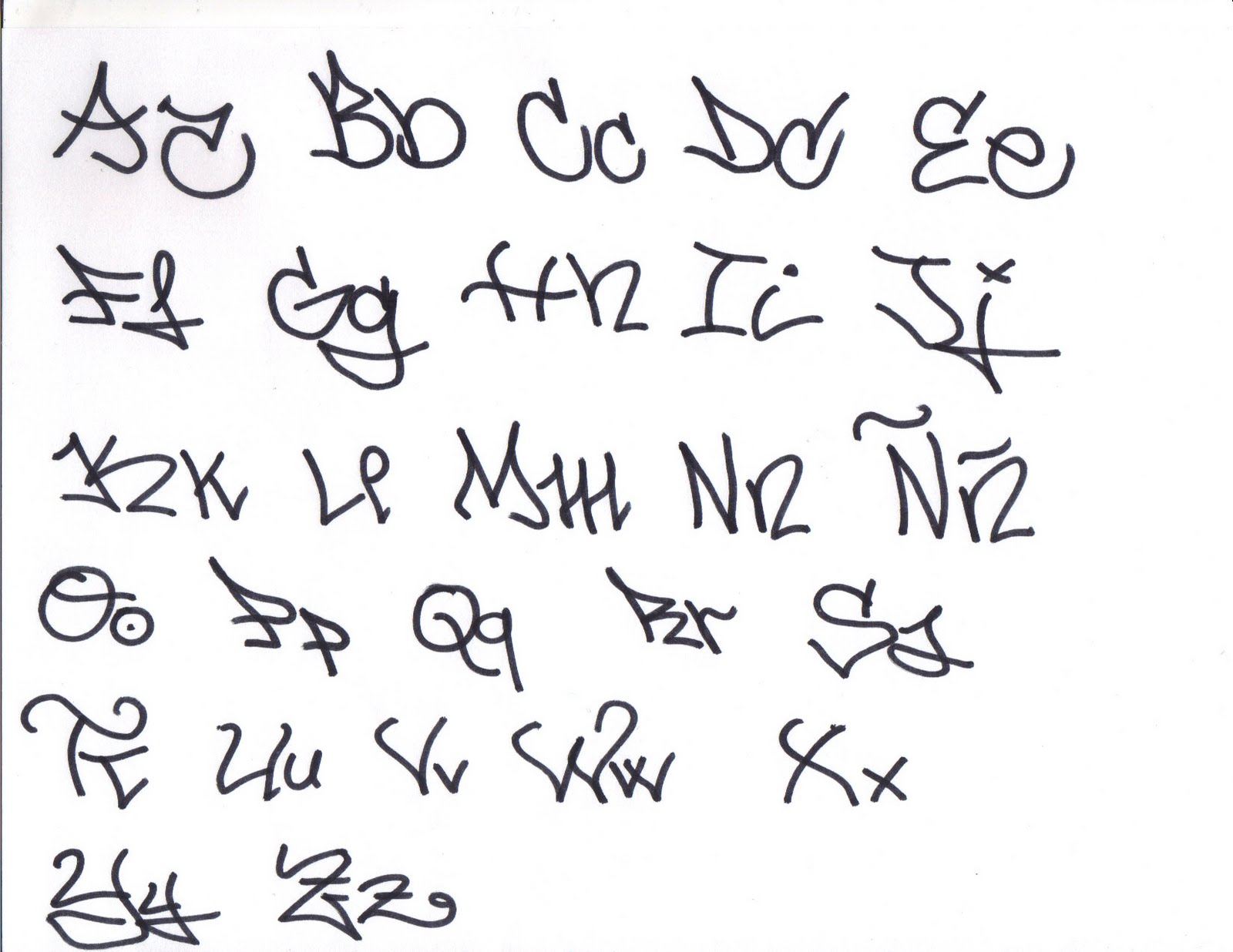By nescafesulas on July 31, 2012 | From graffitirecent.
Graffiti Alphabet
Graffiti and graffito are from the Italian word graffiato ("scratched"). "Graffiti" is applied in art history to works of art produced by scratching a design into a surface. A related term is "graffito," which involves scratching through one layer of pigment to reveal another beneath it.
Graffiti Alphabet
This technique was primarily used by potters who would glaze their wares and then scratch a design into it. In ancient times graffiti was carved on walls with a sharp object, although sometimes chalk or coal were used. The Greek infinitive γράφειν - graphein - meaning "to write," is from the same root.
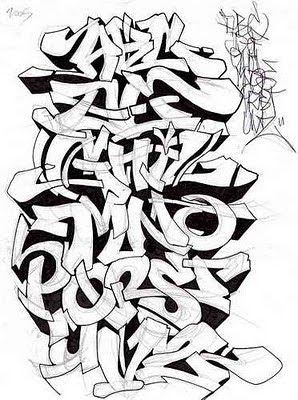
Graffiti Alphabet History
Graffiti Alphabet
The term graffiti referred to the inscriptions, figure drawings, etc., found on the walls of ancient sepulchers or ruins, as in the Catacombs of Rome or at Pompeii. Usage of the word has evolved to include any graphics applied to surfaces in a manner that constitutes vandalism.
Graffiti Alphabet
The earliest forms of graffiti date back to 30,000 BCE in the form of prehistoric cave paintings and pictographs using tools such as animal bones and pigments[3]. These illustrations were often placed in ceremonial and sacred locations inside of the caves.
Graffiti Alphabet
The images drawn on the walls showed scenes of animal wildlife and hunting expeditions in most circumstances. This form of graffiti is subject to disagreement considering it is likely that members of prehistoric society endorsed the creation of these illustrations.
Graffiti Alphabet
Graffiti in the Middle East is slowly emerging, with pockets of taggers operating in the various 'Emirates' of the United Arab Emirates, in Israel, and in Iran. The major Iranian newspaper Hamshahri has published two articles on illegal writers in the city with photo coverage of Iranian artist A1one's works on Tehran walls.
Graffiti Alphabet
Tokyo-based design magazine PingMag has interviewed A1one and featured photos of his work.[49] The Israeli West Bank barrier has become a site for graffiti, reminiscent in this sense of the Berlin Wall. Many graffiti artists in Israel come from other places around the globe, such as JUIF, from Los Angeles, and DEVIONE from London. The religious reference, is commonly seen graffitied around Israel.
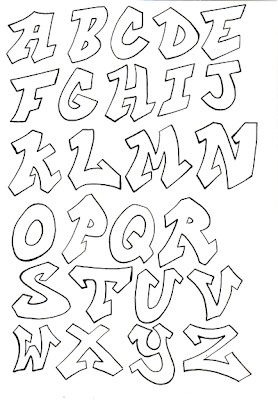
Graffiti Alphabet Methods and Production
Graffiti Alphabet
The modern day graffiti artist can be found with an arsenal of various materials that allow for a successful production of a piece[50]. Spray paint in aerosol cans is the number one necessity for graffiti .
Graffiti Alphabet
From this commodity come different styles, technique, and abilities to form master works of visual graffiti. Spray paint can be found at hardware and art stores and come in virtually every color.
Graffiti Alphabet
Stencil graffiti, originating in the early 1980s, is created by cutting out shapes and designs in a stiff material (such as cardboard or subject folders) in order to form an overall design or image[51]. The stencil is then placed on the canvas gently and with quick, easy strokes of the aerosol can, the image begins to appear on the intended surface.
Graffiti Alphabet
This method of graffiti is popular amongst artists because of its swift technique that requires very little time. Time is always a factor with graffiti due to the constant threat of getting caught by law enforcement.




